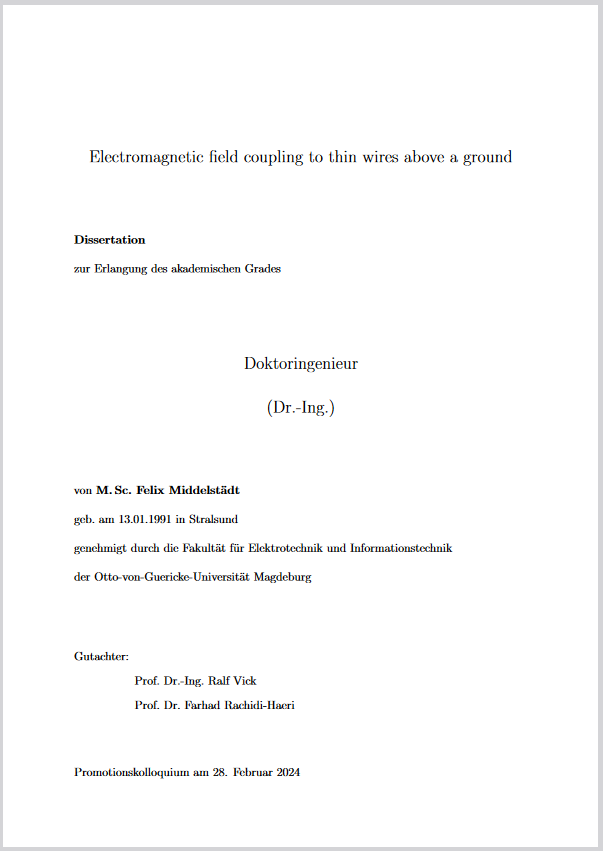Vol. 99 (2024): Middelstädt, Felix: Electromagnetic field coupling to thin wires above the ground

Transmission lines play an important role in many electronic and electrical systems. They guide signals and power between different components. However, they can also act unintentionally as an antenna that receives surrounding electromagnetic fields that might destroy sensitive components. Furthermore, the transmission line might emit electromagnetic fields that could interfere with other devices in the same environment. Hence, the analysis of the transmission line is important, especially in the context of electromagnetic compatibility analysis. There are different kinds of transmission lines, e.g. microstrip lines on printed circuit boards or thin wires above a large ground plane. The goal of this thesis is the analytic and semi-analytic analysis of the current along thin wires above a large ground plane in frequency domain. The general understanding of the wave propagation along and the field coupling to this important class of transmission lines shall be improved by this work. The considered thin wires are excited by a plane wave. They are assumed to be long compared to the wave length and must have a uniform section somewhere along the trajectory. Apart from the uniform section the trajectory of the wire can be arbitrary and lumped impedances can be present at the ports. Multiple wires above a ground plane are considered as well. For these transmission lines the so called asymptotic approach is applicable. It provides an analytic expression for the current in the uniform section of the wire and plays a key role in the analytic and semi-analytic analysis of the current. It is assumed that the current in the uniform section is a superposition of transverse electromagnetic modes and a forced response. The amplitudes of these modes depend on the scattering and reflection coefficients of the wire ports. These coefficients are in general complex, frequency dependent and consider the trajectory of the wire at the ports. They might include high frequency effects like radiation at discontinuities. This is a notable difference to the classical transmission line theory. Hence, the asymptotic approach is applicable to much higher frequencies than the classical theory. The scattering and reflection coefficients can be approximated by numerical and analytic methods. The main focus of this thesis lays on the analytic approximation. An iterative method is used that is derived from the general mixed potential integral equations for thin wires. The iteration is initialized by the classical transmission line solution. Each following solution depends on the previous iteration step. The analytic approximation is compared to a numerical one (method of moments) and a very good agreement is observed. Furthermore, the examples show the significantly improved accuracy compared to the classical transmission line theory. Moreover, the analytic and numerical approximations are compared to measurement results. The complex radar cross section of thin wires above a ground plane is measured and the complex resonant frequencies, the so called natural frequencies, are extracted. The analytic natural frequencies are obtained by using the asymptotic approach and the iterative method. Very good agreement between measurement, analytic and numerical solution is observed for multiple examples.
ISBN: 978-3-948749-45-3

